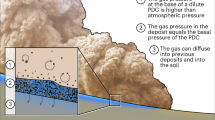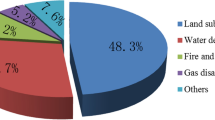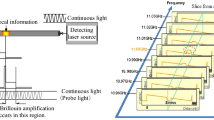Abstract
THE thermometer in a mine, or coal-pit, rises, according to Herschel, 1° for every 90 feet of descent, or 58° per mile; and, according to Clerk Maxwell, tine rate of increase in this country is 1° for every 50 feet of descent. These results are obtained in passing through a very small portion of the superficial crust of the earth; such, for example, as a part of the coal formation, which possesses a very low degree of conductivity. We can hardly, indeed, conceive a worse conductor than a crust consisting of alternating strata of freestone, shale, till, coal, limestone, &c. But these strata are very frequently perforated by comparatively homogeneous intrusions in the form of trap dykes, which not only possess greater conductivity, but which, from the analogy presented by volcanoes, very probably extend down to the molten matter subjacent to the external crust of the earth. Such trap dykes may be compared to an iron poker thrust through the superficial strata having its lower end in a state of fusion, and its upper end kept cool by radiation, into the atmosphere. Through any continuous dyke, if this view be correct, there will therefore be a more rapid escape of heat; and when such igneous rocks occupy spaces of many square miles of the earth's surface, one would, at first sight, expect them to play a very important part in affecting the meteorological conditions of the district in which they are found. They might be expected, by the large amount of heat which they conducted freely to the earth's surface, to stimulate the growth of plants; and by the radiation of the liberated heat into the atmosphere, they ought to become—especially during night—the generators of storms, by causing a constant ascent of rarefied air. It is quite true, however, that the meteorological effects of such an agent must, as in the case of volcanoes, be observed by the far grander cycle of disturbances initiated by the solar heat; and that its agricultural efficiency may be, to a large extent, negatived by differences of chemical constitution, acidity, and exposure. Still, however, the influence is there, and ought, in one way or other, to make itself sensible.
This is a preview of subscription content, access via your institution
Access options
Subscribe to this journal
Receive 51 print issues and online access
$199.00 per year
only $3.90 per issue
Buy this article
- Purchase on Springer Link
- Instant access to full article PDF
Prices may be subject to local taxes which are calculated during checkout
Similar content being viewed by others
References
Ott's transl., vol. i. p. 131.
Author information
Authors and Affiliations
Rights and permissions
About this article
Cite this article
STEVENSON, T. Meteorological Influence of Trap Rocks. Nature 8, 181–182 (1873). https://doi.org/10.1038/008181d0
Issue Date:
DOI: https://doi.org/10.1038/008181d0
Comments
By submitting a comment you agree to abide by our Terms and Community Guidelines. If you find something abusive or that does not comply with our terms or guidelines please flag it as inappropriate.



